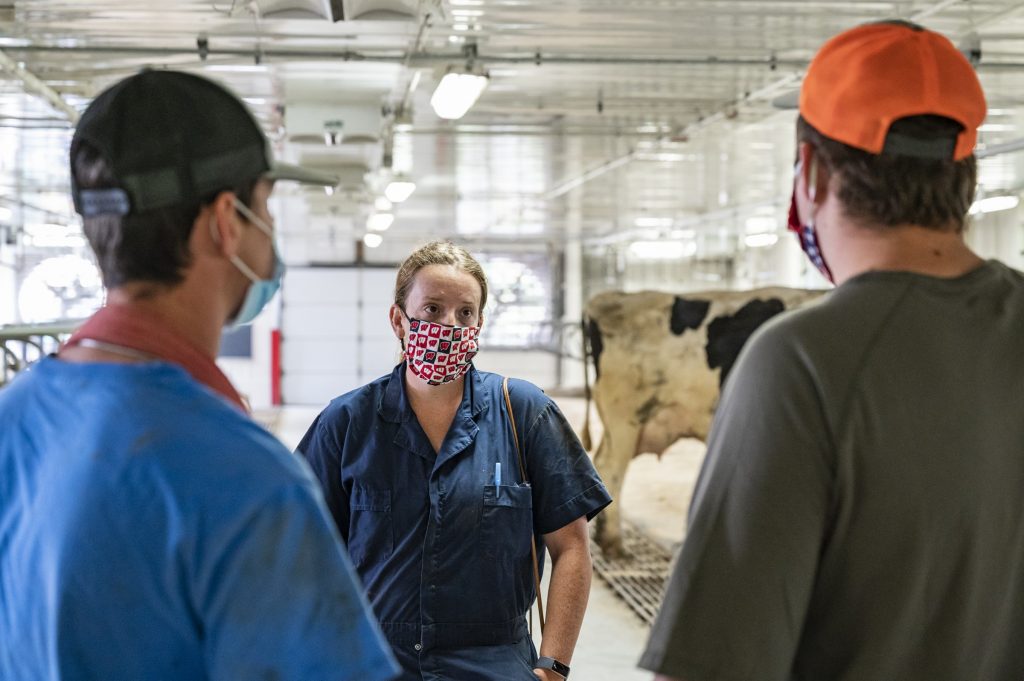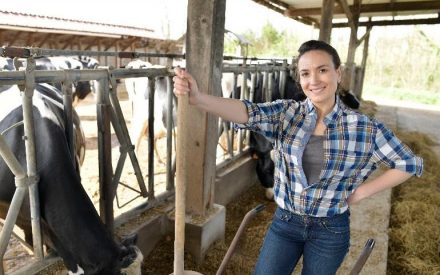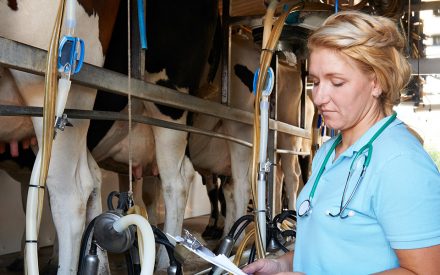
Farms are Risk Filled
Working on a farm is inherently risky—whether you are a family member on a small operation operating equipment or caring for animals—or a hired employee on a bigger operation performing more specialized jobs. Data from the National Safety Council and the U.S. Bureau of Labor statistics documents a per capita death rate for ag workers that is seven times greater than the average for all other industries combined.6 A recently-completed study in Wisconsin echoes the national picture. Wisconsin had 41 injury-related deaths in 2017 and 34 fatal incidents in 2018.7 Additional 2019 data will be published later in 2021. Several studies in the upper Midwest also show that about one in five farms will be the site of a serious, but non-fatal workplace injury in 2021.8 Eighty percent of the estimated 12,000+ Wisconsin farm injuries likely to occur this year alone will need professional medical care.
Farmers and workers, whether family employees or those hired from off-the-farm also experience an unusual array of workplace health-related hazards. This includes respiratory hazards (dust, gases, oxygen deficient workspaces, and organic vapors); chemicals (pesticides, cleaners, fertilizers); noise; ultraviolet radiation through sunlight; and bacterial/viral pathogens.9
“Farm safety” is not a new topic. We’ve made progress over the decades, but we still see needless tragedies. These can be permanently disabling and also wreak havoc to a farming business, a family, or the community. Sometimes we also take the dangers and risks on farms for granted. We “get used to it,” and simply accept all these workplace injury and health conditions as part of the business. But, it does not have to be that way.
Common Historical Motivators to Improve Farming’s Safety Record
There are a number of motivations that could push us to improve the safety (and health) record associated with farm work. Many of these are rooted in our past histories and traditions. Here are a few of these motivators we all think about.
- It’s simply the right thing to do – Nobody wants to see another person get seriously hurt. After all, agriculture is a people business. Farms support the livelihood of families and they add a cultural and economic richness to our communities. We may not always worry about the well-being of ourselves, but we all want to protect our family members, neighbors, relatives, and employees.
- Loss is painful as a result of both physical and emotional pain. A fatal or disabling farm injury leaves huge gaping holes in families, communities and businesses. We often don’t realize how big these losses are until it’s too late.
- Regulation (or the threat of being regulated) sometimes motivates farm operators and managers. But, in reality, relative to other industries, we don’t often see federal and state regulations as a big motivator for farm owners and operators. This is in part due to OSHA’s tendencies to not conduct significant enforcement actions on smaller to mid-sized farms.10 Other agencies promote and enforce farm-centered health regulations such as EPA strictly regulating pesticide safety. State and local agencies regulate practices related to manure and water quality which both have human health implications. But, unless you are a larger operation, the chances of an OSHA inspection or penalty on an individual farm are small relative to other types of dangerous businesses.
- Insurance companies often will incentivize (or disincentivize) safety improvements. There is a direct connection between paid losses (or farms that prove themselves to be safe over long stretches of time) and insurance costs (premiums), especially for worker’s compensation insurance providers property, casualty, liability, health and even life insurance.11
As we’ve seen with a continued high rate of safety (and health) issues on farms—and considering that agriculture is an industry where money is always tight, perhaps we should consider the business case that might be more powerful, additional motivators for farm owners, operators and managers. Thinking about safety as a bottom line issue means very purposeful changes to operations, policies, work practices, training requirements, and use of personal protective equipment. To pay back, farm safety thinking must go beyond just wishful thinking or simple slogans to “Be Safe” or “Use Common Sense.”
Quick Info
- Prioritizing your investments in safety and health can be somewhat overwhelming on a farm. Consider consulting with your primary farm insurer who can help you find experts to assess risk in different areas of your operation and recommend investment priorities that will have the highest ROI.
- Develop a safety and health policy that you can share with all workers and family members. A written document will allow you to communicate expectations and can be a key tool to articulate a safety culture within your farming operation.1,2
- Don’t overlook the importance of providing key personal protective equipment or PPE. When many think about “farm accidents,” high-profile events come to mind like machine entanglements or being trampled or gored by a large animal. But, many of the most expensive injuries are far less dramatic yet can be very costly and/or disabling.3
- To reduce risk, you must make physical, measurable, “concrete” changes to eliminate or physically protect against hazards in the workplace. Telling workers to “be safe” or “use common sense” is simply inadequate. Likewise, training without eliminating hazards will prove ineffective. This can include adding tools or machines to make tasks easier; replacing or adding shielding; upgrading old equipment; reconfiguring animal movement, housing or restraint facilities; rollover protection on tractors; or adding handholds or other upgrades to reduce fall potential (falls while getting on and off tractors and machines are very common). Safety efforts must eliminate hazards and make the act of being safe easier for all.4
- Training for all workers is critical. In many ag sectors, training is often done early in employment, but then, workers are left to fend for themselves. Safety training should be done frequently (monthly or weekly) and is best when integrated into training efforts connected to production “best practices.” Good training on any topic should involve hands on demonstrations including having workers demonstrate back to you that they understand clearly and can perform needed tasks safely.5
New Thinking – Safety Efforts Can and Should Have an “ROI”
Safety takes an investment in time and often in money. But these investments can pay dividends and provide a financial return on investment. This ROI can only be realized by carefully and systematically examining physical risks and hazards; prioritizing next steps and actions; and then, following through to actually make needed changes.4
Safety Costs versus Returns
So, what about this idea that there’s a “business case” associated with efforts to improve safety and health on farms? This tends to be an understudied area in agriculture—but we can examine what is known through research and industry analysis. And, where applicable, we will talk about the important lessons learned from other industries. For example, a number of prominent studies done in industries nationwide show that of the tens of billions of dollars spent on workplace injuries, 80% of the costs come from just 20% of incidents.12 While agriculture has many unique features — there are critical lessons to be learned from other industries that have made great strides in improving safety and health — often seeing the dividends from their efforts in ways that others can learn from.
| Cost: | Example/Reference: |
|---|---|
| Pain and suffering | Chronic pain from past injuries or wear-and-tear on joints, etc. is very common. Pain often results in need for ongoing over-the-counter or prescription pain medication (any type of pain medication has been found to be a risk factor for further injury13) |
| Downtime, lost production | With livestock, tractor, and machinery-related injury, multiple days of lost time are common. Finding replacement workers can be nearly impossible in some situations. One or more days of lost field time in time-sensitive cropping operations (planting, hay operations, harvest) can result in several thousand dollars14 of direct losses and can be especially costly in sub-ideal weather conditions or with undersized equipment field capacity. |
| Increased “replacement” labor cost | If someone is injured, first, it can be nearly impossible in some areas to find replacement help. If you are able, skilled labor cost in WI is over $17/hour and general labor $11 to $13.50/hour, but may take days or more to find fill-in help.15 |
| Stress levels | High stress levels persist following an injury — Chronic stress can impair financial decision making as is widely recognized among farm finance professionals.16 Ongoing stress can also contribute to or exacerbate depression and/or anxiety and can increase risk for farmer or farmworker suicide. |
| Direct medical costs | Direct U.S. medical expenses in 2021 for farm-related injuries based on past studies estimated at $3.2B.12 80% of WI farming injuries (as many as 10K/year) require medical care. Single day inpatient hospital care with simple injuries can range from $5-$10K. Costs can escalate, often costing 5-10X more if post-injury surgery costs. Direct costs (care, rehab, physical therapy) for significant injuries like amputations, major fractures or spinal injuries can range from $100,000 on up to $1M or more. |
| Long-term financial cost | Long term lost time, productivity, loss of income/earning potential estimates are 2-3 times greater than direct medical care costs.12 |
| Long term emotional losses | This can be difficult to quantify — loss of a child or close family member cost is immeasurable. In some cases, the emotional cost from having to “leave” farming can be unbearable for some. Other emotional costs include long-term stress, depression and higher suicide risk overall among farmers.17 |
| Increased worker’s compensation costs | Worker’s compensation costs are based on the risk associated with a specific TYPE of work – often 4-5% of payroll in production ag (in WI).18 This number can be adjusted upward considerably based on poor loss history (or can also be adjusted downward). |
| Long-term lost opportunity; income potential; or realized future | Disabilities of some form are extremely common in agriculture, affecting 1 in 5 adult farmers; 1 in 10 farm employees and 1 in 25 farm youth – This often limits certain activities and tasks depending on the nature of the disability.19 |
Revenue and direct and measurable savings can be slightly more difficult to document, though several research studies point to evidence of the following:
| Revenue/Income: | Example/Reference: |
|---|---|
| While difficult to measure – a “prevented” serious injury or fatality within a family has significant economic consequences. | The National Safety Council cites workplace fatality costs to be: and the average work-related injury at: $1.2M for a fatality (including long-term, lifetime loss of income to a family) and $42,000 for “medically consulted” injuries (based on direct care, ER visits, hospitalization and lost time/production).6 |
| Worker retention and positive impacts on engagement and productivity. | In operations with hired employees, recent focus groups suggest a strong awareness of management’s attitudes toward safety and health. Retaining workers is critical – to bring a new full-time worker on board, the estimated cost is 33% of a worker’s annual wage/salary.20 Also, with engagement and communication between farm owners and workers being critical, studies suggest engaged workers are up to 21% more productive |
| Impact on workers compensation and other insurance-related costs – locate “experience-based” rate tables for workers comp | Worker’s compensation insurance is required on many farms in Wisconsin, and nearly all farms carry other forms of property, casualty, liability, and other insurance. An excellent safety track record can result in premium savings (on W.C. insurance) of 15%-50% over time. On a farm with an annual payroll of $300K, this could mean an annual savings of $1,800 – $6,000 annually (based on 4% W/C rates).21 |
| Lower healthcare costs | Workplace safety, health, and stress are all connected to healthcare needs, incidence of illness, needs for injury care/treatment, etc. While more and more farmers (and employees) are covered, plans tend to have larger copayments and deductibles as compared to workers in other job sectors. The savings incurred through prevention are direct and can amount to $1000-$5000 a year per person (depending on insurance plans).22 |
| Better trust, culture, openness which leads to improvements in above factors | This finding is born out in numerous surveys, focus groups and other findings connected to workplace climate and culture. Openness, transparency, trust and engagement means that workers will work with owner/operators to solve problems for the good of all. Clear communication of the nature of the employer/employee team can be articulated through clearly articulated policies and ongoing conversations, training, etc.1, 2, 23 |
References
- Steel, S. & Murphy, D.J. (2011). Safety and health management planning for general farm and ranch operations. Penn State University Extension. https://ag-safety.extension.org/wp-content/uploads/2019/05/AGRS-123-Revised-Title.pdf
- Shutske, J. (2020). Safety policy model template (for use by farm operator/managers): Sunnyhill Farms, LLC, Anytown, USA. https://uwmadison.box.com/v/SunnyHillSafetyPolicy
- Erkal, S., Gerberich, S. G., Ryan, A. D., Renier, C. M., & Alexander, B. H. (2008). Animal-related injuries: A population-based study of a five-state region in the upper Midwest: Regional rural injury study II. Journal of safety research, 39(4), 351-363.
- Barnett, R. L. (2020). On the Safety Hierarchy and Hierarchy of Controls. American Journal of Mechanical Engineering, 8(2), 61-68.
- Robson, L. S., Stephenson, C. M., Schulte, P. A., Amick III, B. C., Irvin, E. L., Eggerth, D. E., … & Grubb, P. L. (2012). A systematic review of the effectiveness of occupational health and safety training. Scandinavian journal of work, environment & health, 193-208.
- National Safety Council (NSC). (2020). Injury facts 2020 edition. National Safety Council.
- Weichelt B., Burke R., Redmond E., Shutske J. (2020) Wisconsin farm-related fatalities in 2020. Marshfield Clinic Research Institute.
- Gerberich, S.G., Gibson, R.W., French, L.R., Carr, W.P., Renier, C.M., Gunderson, P.D., Martin, F., True, J.A., Shutske, J. and Brademeyer, K. (1993). The Regional Rural Injury Study—I (RRIS—I): a population-based effort. Report to the Centers for Disease Control. Regional Injury Prevention Center, University of Minnesota, Minneapolis, MN.
- Donham, K. J., & Thelin, A. (2016). Agricultural medicine: rural occupational and environmental health, safety, and prevention. John Wiley & Sons.
- Liebman, A. K., Wiggins, M. F., Fraser, C., Levin, J., Sidebottom, J., & Arcury, T. A. (2013). Occupational health policy and immigrant workers in the agriculture, forestry, and fishing sector. American journal of industrial medicine, 56(8), 975-984.
- Weichelt, B., Pena, A. A., Joyce, J., & Keifer, M. (2020). Economic Evaluation and Systematic Review of Publicly Available Workers’ Compensation Practice Details and Mod Rate Calculators Applied to Upper Midwest Agriculture. Journal of agromedicine, 25(1), 38-51.
- Leigh, J. P., McCurdy, S. A., & Schenker, M. B. (2001). Costs of occupational injuries in agriculture. Public health reports, 116(3), 235.
- Voaklander, D. C., Umbarger‐Mackey, M. L., & Wilson, M. L. (2009). Health, medication use, and agricultural injury: A review. American journal of industrial medicine, 52(11), 876-889.
- Peart, R. M., & Smith, R. (2004). Simulating field operations and crop growth. Agricultural systems management: optimizing efficiency and performance, 79.
- Jette Nantel, S. (2018). Farm employment in Wisconsin. University of Wisconsin-Madison Division of Extension. https://farms.extension.wisc.edu/articles/farm-employment-in-wisconsin/
- Cuthbertson, C., Brennan, A., Shutske, J., Zierl, L., Bjornestad, A., Macy, K., … & Skidmore, M. (2020). Developing and Implementing Farm Stress Training to Address Agricultural Producer Mental Health. Health Promotion Practice, 1524839920931849.
- Peterson, C., Stone, D. M., Marsh, S. M., Schumacher, P. K., Tiesman, H. M., McIntosh, W. L., … & Luo, F. (2018). Suicide rates by major occupational group—17 states, 2012 and 2015. Morbidity and Mortality Weekly Report, 67(45), 1253
- Wisconsin Compensation Rating Bureau. (2020). Frequently asked questions: What is experience rating? https://www.wcrb.org/FAQ/
- Miller, C. D., & Aherin, R. A. (2018). The prevalence of disabilities in the US farm population. Journal of Agricultural Safety and Health, 24(4), 243.
- Otto, N. (2107). Avoidable turnover costing employers big. Employee benefit news (EBN). https://www.benefitnews.com/news/avoidable-turnover-costing-employers-big
- Wisconsin Office of the Commissioner of Insurance. (2019). Consumer’s guide to worker’s compensation insurance for employers. Wisconsin Office of the Commissioner of Insurance. https://oci.wi.gov/Documents/Consumers/PI-065.pdf
- Dulitz, M., & Schrader, S. L. (2013). Betting the farm: health coverage, behaviors and concerns among South Dakota farmers. South Dakota Medicine, 66(10).
- Konkel, A., Kates, A., Knobloch, M. J., Byrs, N., Ruegg, P., Safdar, N., Sethi, A., Shutske, J. Steinberger, A., & de Campos, J. L. (2020). One health: farmworker perceptions of antibiotic resistance and personal protective practices on Wisconsin dairy farms. Infection Control & Hospital Epidemiology, 41(S1), s448-s449.

 Building a Positive Farm Business Culture: Perceptions of Health and Safety among Latin/Hispanic Dairy Workers
Building a Positive Farm Business Culture: Perceptions of Health and Safety among Latin/Hispanic Dairy Workers A culture of ‘farm safety’ starts with a well-written policy
A culture of ‘farm safety’ starts with a well-written policy Stress in Agriculture
Stress in Agriculture Throttle Back on Stress
Throttle Back on Stress


